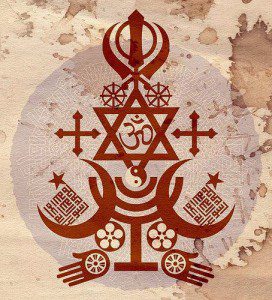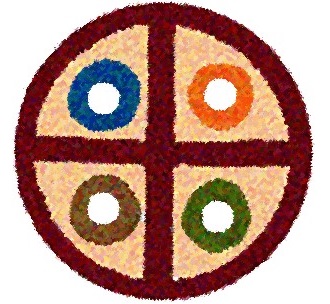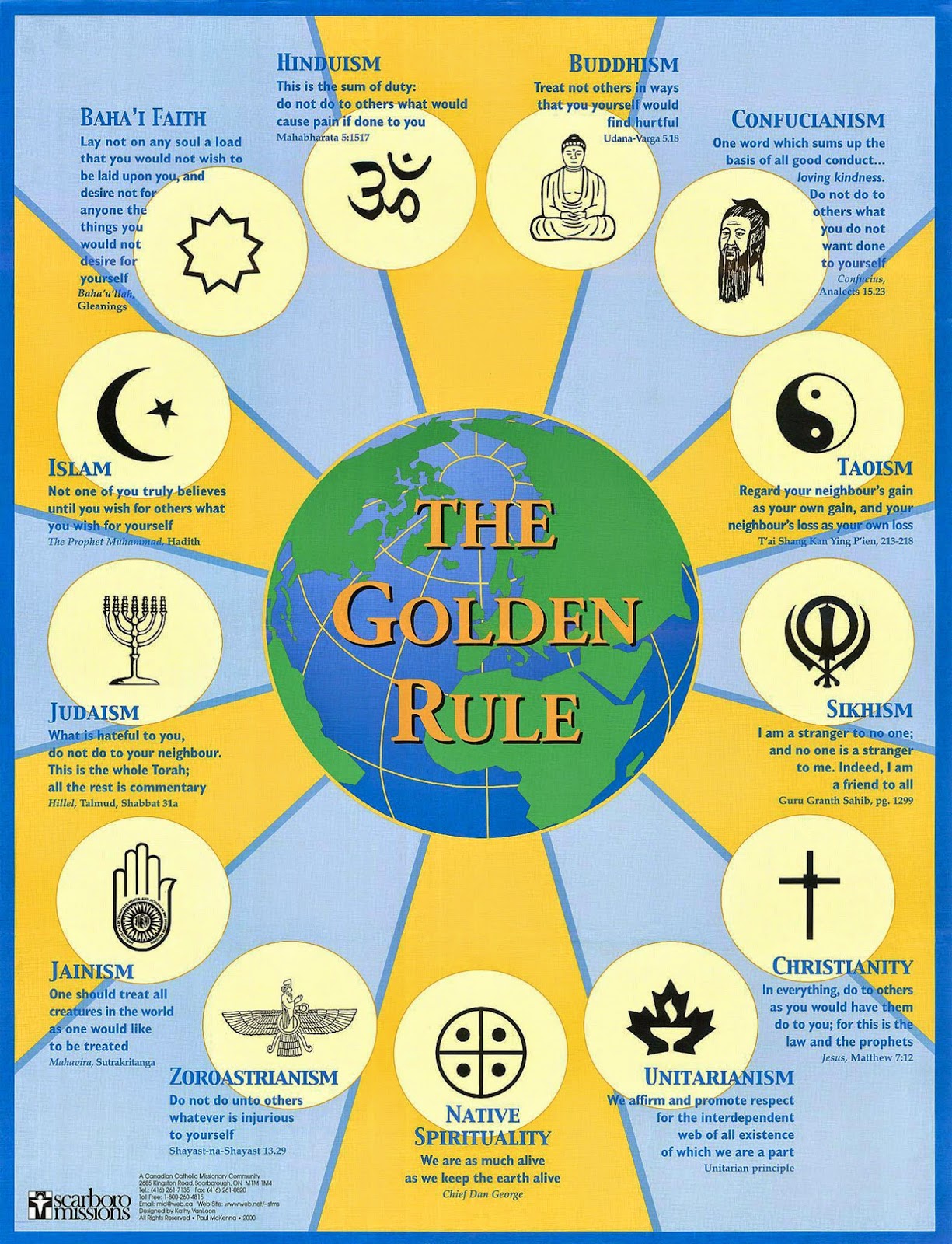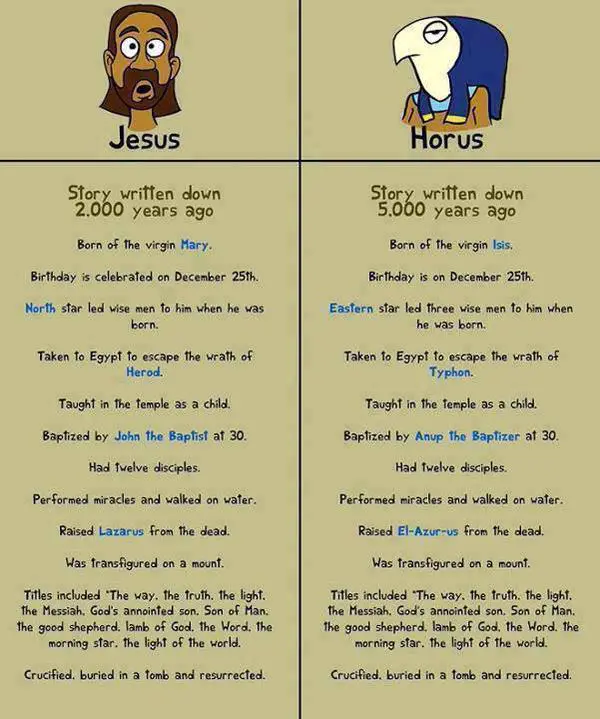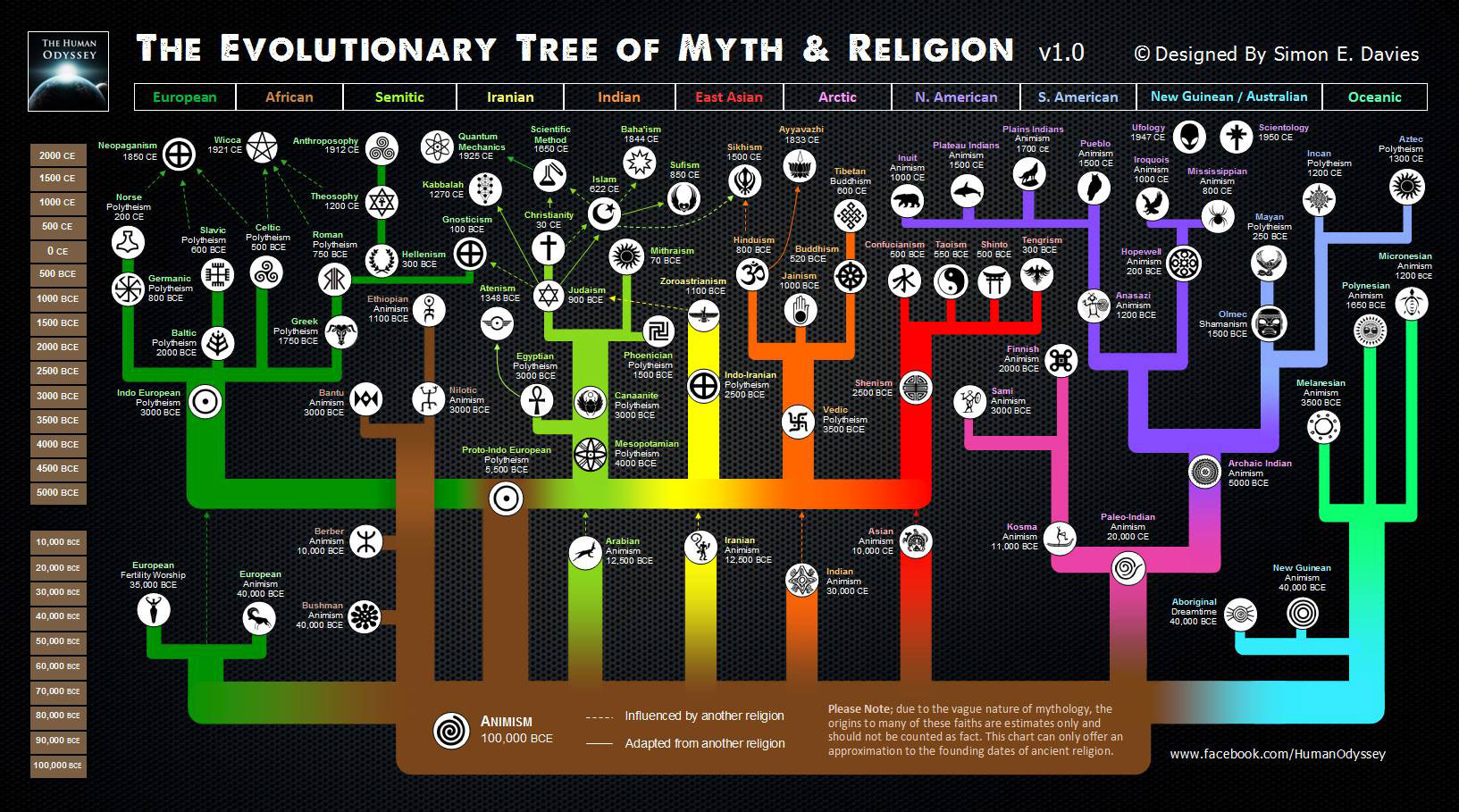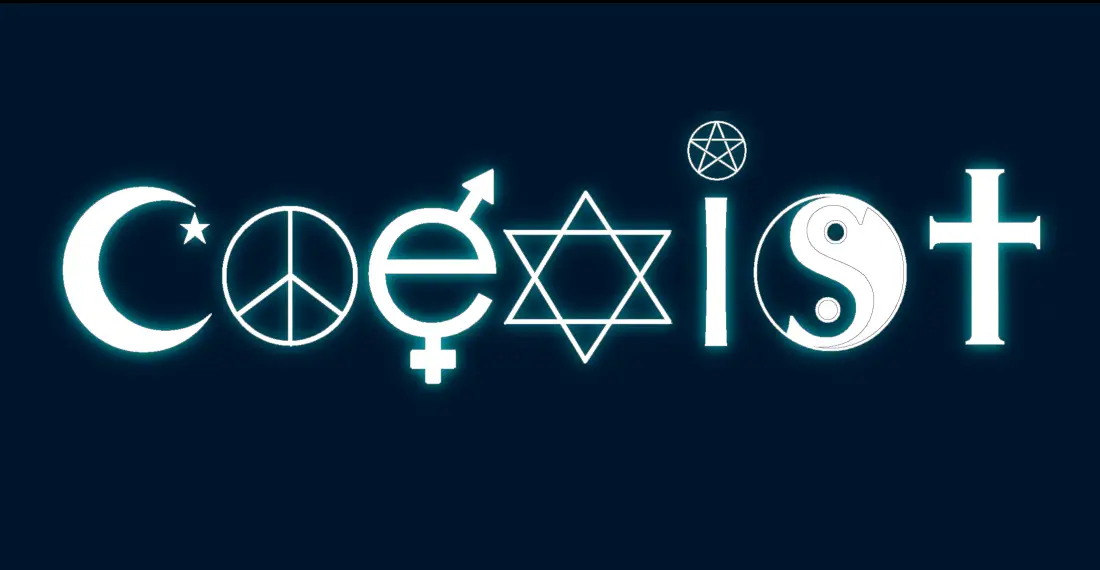Contributing writer for Wake Up World
The Brotherhood of Man
We are all siblings; a brotherhood of humanity. This is verified biologically of course, but perhaps more importantly for our understanding of one other, the brotherhood of man is verifiable in our belief systems, in our spiritual ideas that are upriver from the rest of our thinking, and our creation stories from which stems our very concept of existence.
Many of the foundational stories and principles of religions can be boiled down to their mutual essence, which inarguably reveal their common origins. And although many people frequently get caught up with the difference of the feather rather than the similarity of the bird, so to speak, the common origins of religions and their central tenets is proof that – despite varying ‘faiths’ – we are more alike than we are different.
[pro_ad_display_adzone id=”110028″]
The Matrix of Four
In today’s world, we have learned to use polarized, dualistic thinking — the opposition of two competing ideas, left and right, black and white. The very inquiry into the origins of human nature is typically posed through such a limited mindset: “Is it nature or nurture?” But what if the truth was somewhere in the middle? Or somewhere else entirely? In reality, to consider any information or situation comprehensively – including our belief systems and our origins – questions must be posed in four ways, not just two. “Is it one or the other, or neither or both?”
Applying this Matrix of Four — the duality of polarity — to our thinking elevates individual consciousness to find alternatives, grey areas and potentials. And in the case of intimate theosophical understandings of our nature, it enables us to find commonality instead of divisiveness, bringing us ever closer to our collective truth.
Four is recognized as symbol for completion. This symbolism is illustrated in the four seasons, derived from the two solstices and two equinoxes of our orbit, and is represented in the four forms of arithmetic. Beyond that there are four aspects of self; the mental, physical, spiritual and the natural. These fundamental universal absolutes are alone powerful enough to be the sources of the Matrix of Four and its symbolism.
Correspondingly the Matrix of Four, the philosophy of the duality of polarity, is presented in the beginning of practically every creation story, whether the Popol Vuh or Genesis. Nearly all creation stories start with the polarity of Heaven and Earth followed by the polarity of male and female. In this respect the Matrix of Four is the basis of most all creation stories as well as being depicted in every cross that so many religions share.
Creation Stories and the Foundations of Belief
Islam, Judaism and Christianity all share a common creation story, from Genesis, the first story in The Bible. The polarities of Heaven and Earth are immediately described followed by the polarity of male and female. Then the first four characters are described. These first four characters set the tone for the rest of the story. The first two characters are God and Adam, the masculine. The next character is Eve, the feminine (as opposed to the masculine), and the fourth character is the serpent, the deceiver (as opposed to the creator). These four biblical archetypes at the basis of the bible, which form the basis of 3 major world religions, are more influential than we can reckon at this point. Beside illustrating the common origin of these religions, they also illustrate and conceptualize our archetypal thinking and being — the duality of polarity.
The matrix of four begins the Biblical creation story, is illustrated in the first four characters, and depicted in the cross — the definitive symbol of Christianity — but there are other biblical connections too. There are four gospels in the Bible; that of Mathew, John, Luke and Mark. The Hebrew word for God is a four letter word, YHWH (Yahweh), known as the tetragrammaton. The four letters are said to be symbolic of the four worlds of the Kabala; emanation, creation, formation, action. The Matrix of Four is also represented by the common saying in Kabala, “The wicked obey the law through fear; the wise keep the law through knowledge”, based on the polarities of wickedness and wisdom, fear and knowledge. Four is also central to the Hebrew celebration of Passover, in the four questions, four cups of wine and four expressions of redemption.
Four is also embedded into the ancient philosophies and creation stories of many Native American peoples, perhaps none so well-known as the Hopi, Navajo and Zuni peoples of the Southwest. Their stories celebrate four symbolically and philosophically in the symbol of the four-quartered cross within a circle, as well as other similar designs. Perhaps most significantly the Hopi believe we are living in the fourth world. Hopi tradition states the first world was Endless Space, the second was Dark Midnight, the third was the Age of Animals and the fourth is the World Complete. Four migrations were written upon four sacred tablets which man was supposed to undertake once in this fourth world — to separate into smaller tribes and began to migrate in four different directions, settling in new lands.
Thousands of miles away and centuries before the establishment of the Hopi and Navajo, the Mayan creation story — the Popol Vuh — told of four gods and four first men.
The four Vedas (Sanskrit for “knowledge”) are the foundational scriptures in Hindu theology: the Rigveda, the Yajurveda, the Samaveda and the Atharvaveda. Each Veda has been subclassified into four major text types: the Aranyakas (rituals and ceremonies), the Brahmanas (commentaries), and the Upanishads (meditation, philosophy and spiritual knowledge) and the Samhitas (mantras and benedictions). In turn, the Samhitas for example are grouped into four categories: the Rig-Veda, Sama-Veda, Yajur-Veda, and Atharva-Veda.
The Cross Symbolism in Theology
One could go on about the number of occurrences of four in the Old and New Testaments, but its representation in the cross symbol adopted by Christianity, Judaism and Islam, its presence in the creation story, and its basis in the four worlds of the Kabala are alone reflective of its major significance.
Clear examples of the cross are used in many theologies, not just Christianity and Islam. The universality of the cross in Hindu, Taoist, Native American, Egyptian, Celtic and Judeo-Christian theology and symbolism illustrates its archetypal noteworthiness and hints at the commonality among human spirituality and theology. Jesus, Moses and dozens of other figures from the Old Testament also appear in the Quran, the central scripture of Islam, which literally translates as “the recitation”. The Quran describes the polarities of believers and unbelievers as well as peacemakers and mischief-makers. These four characterizations are frequently noted in the Quran and arguably form the basis of its characterization model.
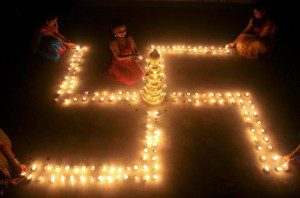
An elaborate variation of the cross, the swastika, was used throughout the world for thousands of years before the Nazis adopted it. It was used by American Indians from Saskatchewan to Central America. The Kuna people of Panama believe the swastika shape represents the octopus that created the world in all four directions. The Swastika was used by the ancient Greeks to represent movement in art as early as the eighth century BC. The Hindus used it for thousands of years and it is still a holy symbol among Hindus, in Buddhism and Jainism. Jain temples and texts must contain a swastika and it is essential to begin Jain ceremonies. The Sanskrit word swastika means auspicious object and it is often displayed with four dots at the four angled arms. The swastika is representative of totality. And like all crosses it is also representative the matrix of four — the duality of polarity.
The Ancient Egyptian cross is the Ankh. It is one of the oldest and most distinguished crosses. The top section is not a line, but an oval. The mysterious symbol is said to represent eternal life. The ankh has four parts, two matching lines, one longer line and a wholly distinct fourth part, the oval. Hieroglyphs show Egyptian gods carrying one or a pair of ankhs and various sarcophaguses depict buried royalty holding ankhs. The ankh symbol was later adopted by Coptic Christians.
The Matrix of Four Expressed in Ideology
Nearly every form of theology and ancient philosophy points to the Matrix of Four, and its potentiation, whether subtly or not so subtly. This potentiation results from the duality of polarity — the contrast of the divine with the demonic, and our elemental physicality with our elaborate spirituality. Like Adam and Eve, we choose. According to the Bible, God gave Adam and Eve the gift of moral agency — the freedom of choice — Eden and expulsion. This idea is visible in Christianity, Judaism and Islam, as well as nearly all other theology, with varying interpretations.
Similarly, the archetype of the four wise monkeys — the epitome of archetypal thinking — has its roots in Chinese philosophy and can be traced back to at least the 8th century. In Japan, it is interpreted as akin to the Golden Rule, the code of morality and ethics that essentially states “treat others as you would like to be treated”: hear no evil, see no evil, speak no evil and, as a result, fear no evil. Further indicating their shared origin, a version of the Golden Rule is at the foundation of each major religion around the world, reflecting a common understanding our choice in duality.
“From a deeper point of view Yamantaka (The Slayer of Death from Buddhist legend) represents the dual nature of man, who shares his physical nature, his instincts, drives, and passions with the animals, and his spiritual nature with the divine forces of the universe. As a physical being he is mortal, as a spiritual being he is immortal. If his intellect is combined with his animal nature, demonic forces are born, while the intellect guided by his spiritual nature produces divine qualities.” — from The Way of The White Clouds, by Lama Anagarika Govinda.
December 25, Crucifiction, Wise Men and The Virgin Mother
Notably, there are also numerous other details common to the central stories of major religions. For example,
- Jesus was born in a manger on December 25 to a virgin, Mary, and an earthly father, Joseph the shepherd. His birth was marked by a star and was attended by Wise Men bearing gifts. He had 12 disciples, walked on water, and was crucified and subsequently resurrected, an event which is celebrated at the Vernal Equinox (Easter).
- Chrishna of India was born on December 25, 3228 BC, his mother was a virgin, Maia (similar to Mary).
- Mithra of Persia, the Roman pagans god of light, was born on December 25, before 1500 BC. His birth was witnessed by Shepherds that brought gifts to honor him.
- Horus of Egypt was born on December 25, before 2500 BC. His mother, Isis, gave birth to him in a swamp. He had 12 disciples, walked on water, and was crucified and resurrected.
- Buddha of India was born on December 25, 563 BC, his mother’s name was Maya (again, similar to Mary) and she was also a virgin. His birth was announced by a star, and he was visited by Wise Men who declared that they had seen Signs of his birth.
- Beddou was a god of Japan, China, and Ceylon born on December 25, 1027 BC. Born of royal blood, his mother was also a virgin.
- Quetzalcoatl, a god of ancient Mesoamerica was born of a virgin on December 25 around 900 BC. He fasted forty days, and was crucified.
- Hercules, son of the god Zeus, was born to an earthly mother on December 25 around 500 BC. He was raised by an earthly father, and died by crucifiction (albeit voluntary).
- Attis of Phrygia was born on December 25 around 1200 BC, again, to a virgin mother. He was a shepherd who rose from the dead at the Vernal Equinox (Easter).
- Osiris of Egypt was born on December 25, before 2500 BC, to a virgin (Isis-Meri, also similar to Mary) in a cave. His birth was announced by a star and was attended by three wise men. His Earthly father was “Seb”, which translates to “Joseph.” Osiris walked on water, was betrayed by Typhon, was crucified, and was resurrected 3 days later — which is celebrated at the Vernal Equinox.
When one considers how much commonality there is between religious scriptures, their theological foundations and their central characters, it becomes clear that each is born of the same origin; this becomes particularly apparent when one considers similarities between the teachings of Buddha and Jesus, for example. So in serious consideration of these common scriptures, it becomes clear that the benefit to be found in their teachings is not in their literal interpretation but the metaphorical or allegorical.
The Matrix of Four: The Deeper Interpretation of Theology
There are countless instances of theological correlations with the philosophy of the Matrix of Four, and they all suggest ways to utilize this metaphilosophy in navigating the duality and polarity of our world.
Although some people believe there can be no interpretation of holy books at all — that there is only one truth (usually their own) — the fact is that all religious and philosophical texts might be interpreted differently by different people, depending on their level of conscious awareness. A critical divergence in their interpretation is firstly between the literal and the allegorical, and secondly, whether the story is reflective of internal spirituality or external physicality.
For instance, as noted Islamic tradition refers to four characterizations in the external world — believers and unbelievers, peacemakers and mischief-makers — however some hold it is possible that this is, at least in part, reflective of the illustration of our internal state of consciousness, our thinking as well as the resulting external being. Of course this interpretation idea and the divergence of literal and allegorical interpretations of theology may be considered blasphemous to some and quelled instead of rewarded.
According to The Zohar, a Kabalistic text first publicly known in the 13th century, there are four ways to interpret theology which lead to ascension. Ascension is said to be like shedding the cocoon of unconscious ignorance and developing the butterfly of consciousness. Again, this concept is based on the duality of polarity, as ascension of both the self and the collective consciousness begins with breaking – or not – the patterns which unknowingly cause unhappiness.
In Judaism, the theological interpretive formula (which reflects the Matrix of Four) is called the four PaRDeS. The capitalized letters represent the four aspects of this formula, translated from Hebrew (in such translations vowels are ignored). Each type of PaRDeS examines the meaning of a text; the Peshat means the literal or contextual meaning of the text, Remez is the allegorical meaning, Derash includes the metaphorical or comparative meaning, and Sod represents the hidden meaning. Legend has it understanding this formation of four is a final step on the path to ascension. Notably, the combination of the letters PRDS is similar to paradise, where ascension through consideration of the four aspects is said to lead.
The first two are obvious, while the comparative and hidden levels of interpretation are more subtle and require more to decipher. And while the more complex modes of awareness are often left unconsidered by many people, still constrained to the left/right mode of thinking, awareness of the four PaRDeS of interpretation and the Matrix of Four as a mode of thinking, is a valuable tool not just in understanding theological presentation but also in understanding our society. When extrapolated as a lens to view society, the Four PaRDeS can be applied firstly by our surface understanding; our individual senses. The secondary more elaborate layer of understanding our society arrives in the teachings of others; the third is a combination of collective learning and our own experience used comparatively; the fourth is the intuitive approach, where one cannot explain exactly how one reaches an answer but the answer is nonetheless a useful and truthful one.
Understanding and striving toward these interpretive modes of thinking can enhance both our intuitive and critical understanding of our collective and individual nature. We have the potential to be either materialistically driven or spiritually driven, and we can be either war-makers or peace-makers.
When we understand not just the common origins but the common philosophies at the core of religious theology, we have the opportunity to rise above the societal and political influences that promote dualistic black/white thinking and division between religious beliefs. By applying deeper modes of thinking — the PaRDeS, or the Matrix of Four — we can uncover the hidden context behind religious scriptures and, by understanding their commonality, can decisively choose to be peacemakers — rather than focusing on their literal interpretation of religious scriptures and fighting over the “one true faith”. Indeed, understanding the metaphorical and intuitive/hidden meanings of these scriptures allows us to realize the true brotherhood of man. Let’s reintegrate our human cultural beauty and collective consciousness instead of separating each other by our belief systems as a justification for waging war on our brothers and sisters.
The Little Green Book of Revolution
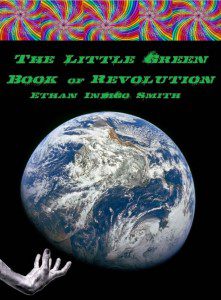 The Little Green Book of Revolution is an inspirational book based on ideas of peaceful revolution, historical activism and caring for the Earth like Native Americans.
The Little Green Book of Revolution is an inspirational book based on ideas of peaceful revolution, historical activism and caring for the Earth like Native Americans.
A pro-individual and anti-institutional look at the history of peaceful proactive revolution, it explores the environmental destruction inherent to our present energy distribution systems and offers ideas to counter the oligarchical institutions of the failing ‘New World Order’.
The Little Green Book of Revolution is available here on Amazon.
Also by by Ethan Indigo Smith:
- Mutually Agreed Peace: Ending The Doctrine of Perpetual War
- Idiots, Zealots, Elitists and Patriots: The Four “Wise Monkeys” of Modern Society
- Marijuana Prohibition and The Suppression of The Divine Feminine
- Meditation 108: A Guide to Meditating for the Infant Practitioner
- Is Matriotism The Future of The Divine Feminine? (w/Andy Whiteley)
- A Little Green Revolution: the Rainbow Warriors will Heal the Earth Mother
- The 5 Tibetan Rites of Rejuvenation: 108 Movements to a Meditative Mind State
- Why Governments Promote Deadly Nuclear Energy and Ban Beneficial Hemp
- Hate: The Ultimate Social Control Mechanism
About the author:
 Activist, author and Tai Chi teacher Ethan Indigo Smith was born on a farm in Maine and lived in Manhattan for a number of years before migrating west to California. Guided by a keen sense of integrity and humanity, Ethan’s work is both deeply connected and extremely insightful, blending philosophy, politics, activism, spirituality, meditation and a unique sense of humour.
Activist, author and Tai Chi teacher Ethan Indigo Smith was born on a farm in Maine and lived in Manhattan for a number of years before migrating west to California. Guided by a keen sense of integrity and humanity, Ethan’s work is both deeply connected and extremely insightful, blending philosophy, politics, activism, spirituality, meditation and a unique sense of humour.
Ethan’s books include:
- The Complete Patriot’s Guide to Oligarchical Collectivism, an insightful exploration of history, philosophy and contemporary politics.
- The Geometry Of Energy: How To Meditate, an empowering four step meditation that promotes individuation and understanding by way of the four dimensions.
- The Matrix of Four, The Philosophy of the Duality of Polarity on the subject of the development of individual consciousness.
- 108 Steps to Be in The Zone a set of 108 meditative practices for self discovery and individual betterment, including techniques to develop balance, transmute sexual energy.
For more, visit Ethan on Facebook and check out Ethan’s author page on Amazon.
[pro_ad_display_adzone id=”110027″]

